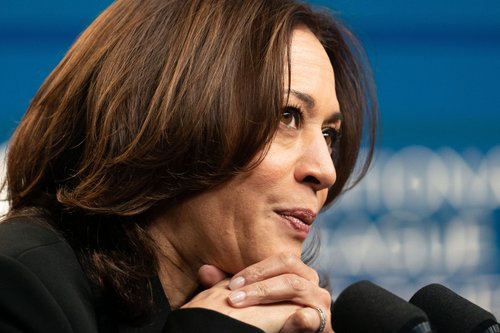Are workplaces ready for the older employee?
Jul 26, 2022
4 mins


US-based freelance journalist.
Apply for a job in the US and you’ll be asked several questions that have little to do with the role itself. Recruiters might want to know about your gender identity, if you have a disability, what ethnic group you are from and even whether you’re a US Army veteran. This is all done to ensure the company is hitting diversity, equity and inclusion targets.
However, employers rarely take steps to ensure that diversity also applies to age. On the contrary, ageism — often labeled the last acceptable bias — is keeping America’s older population out of employment, and they don’t have to be of pensionable age, either.
How old is too old?
Research shows that 78% of US workers over the age of 40 have experienced or witnessed age discrimination. Heather Tinsley-Fix, a senior advisor on employer engagement at AARP, a US advocacy body for older people, says it has actually gotten worse since the organization began tracking workers’ experience of ageism in 2006. “We hear frequently from people [who say], for example, ‘I got pretty far through the process until the interview stage, until they saw me, and then they ghosted me.’ Some people have been asked outright, ‘How old are you?’ in interviews, which is really not a very good idea to do, even though it’s technically legal. We hear stories like this all the time,” she says.
The aging workforce
But in the face of a rapidly aging population and a chronic skills shortage, America may now be forced to face the music of widespread age discrimination. US census projections show that older adults will outnumber children by 2034, by which time the country is expected to have 77 million people aged 65 and over, but just 76.5 million children under 18 years old. The effect on the workplace will be severe, according to the US Bureau of Labor Statistics. By 2030, all age categories of workers in the US will have declined except for people aged 75 and older, when their labor force participation rate is expected to jump from 8.9% to 11.7%.
The question is: are American workplaces ready for this change? No, they’re not, according to a 2017 report by a Senate Special Committee on Aging, which found that most employers know the workforce is getting older, but few are taking action. “While 80% of employers say they are supportive of employees who plan to work past the age of 65, only 39% offer flexible scheduling options and only 31% facilitate processes for moving from full-time to part-time roles,” it states.
Covid-19 as a game changer
The pandemic – and the shift towards remote work and more flexible arrangements – have altered the situation dramatically. “Fundamentally, the workplace has changed,” says Robert Morison, a senior advisor at Age Wave, an organization that helps employers to adopt programs such as those offering phased retirement, retiree return and older employee recruitment. “The pandemic has forced employers to be much more flexible and make remote work, work. When they need experienced, part-time, flexible-schedule, partly-remote employees, working retirees can be an excellent fit,” he adds.
The pandemic also demonstrated some interesting trends regarding older workers in the US. Unemployment affected older staffers far more in the early days of the pandemic: those aged 55 and older were 17% more likely to lose their jobs than employees who were just a few years younger. But many of those workers have now returned to jobs, with employment levels for people aged 55 to 64 at pre-pandemic levels, says Tinsley-Fix.
Surveys also show that older workers were among the groups better able to cope with the adjustments that the pandemic threw up, she adds. “I don’t want to paint too broad of a brush, but older workers – like older people generally – tend to have more emotional resilience because they’ve lived longer and they’ve developed strategies to cope,” she says. “They’ve also learned that they can cope with past situations. So even though they’re dealing with the same levels of stress or burnout as everyone else, they’re more likely to say, ‘Yeah, but I’m managing’.”
Work to live or live to work?
Much has been written in recent years about how people around the world are living longer and want to continue working past retirement age. But life expectancy in the US has been declining and now stands at 76.6 years, the lowest in 25 years, and well behind some Asian and European countries where people on average live into their 80s. Poor healthcare, high rates of death due to Covid-19 and opioid use are factors sapping US life expectancy. Working longer is about economic necessity, rising inflation and the need to stay employed to gain health benefits, says Tinsley-Fix. But she adds that it’s also about continuing to contribute, having structure and enjoying social outlets. “The concept of retirement as a cliff – one day you just stop working and never go back – is really over. There’s really more of a gradual kind of slowing down into retirement.”
The benefits for workplaces
Businesses have a lot to gain from older people being more of a feature, with inter-generational information flow and collaboration boosting productivity.“Different generations enjoy working together and learning from each other,” says Morison. “The demand for mentoring relationships, both on and off the job, is high. One of the things older employees most enjoy is sharing their experience and helping ‘bring along’ younger generations of colleagues. Employers who don’t take advantage of intergenerational connections are simply missing the boat.”
The advantages are clear but it will need a concerted effort to make work and workplaces fit for purpose for older people, says Tinsley-Fix. “It’s going to take the government, employers and people themselves all contributing to solutions,” she says. “So, for example, governments play a role in [creating] safety nets and portable benefits. Employers play a role in terms of structuring work so that people can take advantage of flexibility and periods of ‘leaning out’ to care for children, care for elders or to re-skill. And people themselves need to stay sharp, stay curious and re-skill.”
Photo: Welcome to the Jungle
Follow Welcome to the Jungle on Facebook on LinkedIn and on Instagram and subscribe to our newsletter to get our latest articles every day!

More inspiration: DEI

Sh*t’s broken—Here’s how we fix work for good
Built by and for a narrow few, our workplace systems are in need of a revolution.
Dec 23, 2024

What Kamala Harris’s legacy means for the future of female leadership
The US presidential elections may not have yielded triumph, but can we still count a victory for women in leadership?
Nov 06, 2024

Leadership skills: Showing confidence at work without being labeled as arrogant
While confidence is crucial, women are frequently criticized for it, often being labeled as arrogant when they display assertiveness.
Oct 22, 2024

Pathways to success: Career resources for Indigenous job hunters
Your culture is your strength! Learn how to leverage your identity to stand out in the job market, while also building a career
Oct 14, 2024

Age does matter, at work and in the White House
What we've learned from the 2024 presidential elections about aging at work.
Sep 09, 2024
The newsletter that does the job
Want to keep up with the latest articles? Twice a week you can receive stories, jobs, and tips in your inbox.

Looking for your next job?
Over 200,000 people have found a job with Welcome to the Jungle.
Explore jobs